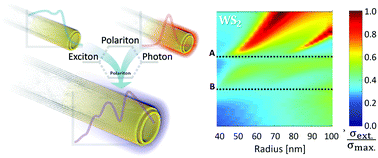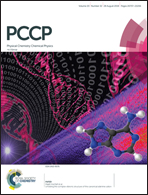Strong light–matter interaction in tungsten disulfide nanotubes†
Abstract
Transition metal dichalcogenide materials have recently been shown to exhibit a variety of intriguing optical and electronic phenomena. Focusing on the optical properties of semiconducting WS2 nanotubes, we show here that these nanostructures exhibit strong light–matter interaction and form exciton–polaritons. Namely, these nanotubes act as quasi 1-D polaritonic nano-systems and sustain both excitonic features and cavity modes in the visible-near infrared range. This ability to confine light to subwavelength dimensions under ambient conditions is induced by the high refractive index of tungsten disulfide. Using “finite-difference time-domain” (FDTD) simulations we investigate the interactions between the excitons and the cavity mode and their effect on the extinction spectrum of these nanostructures. The results of FDTD simulations agree well with the experimental findings as well as with a phenomenological coupled oscillator model which suggests a high Rabi splitting of ∼280 meV. These findings open up possibilities for developing new concepts in nanotube-based photonic devices.



 Please wait while we load your content...
Please wait while we load your content...